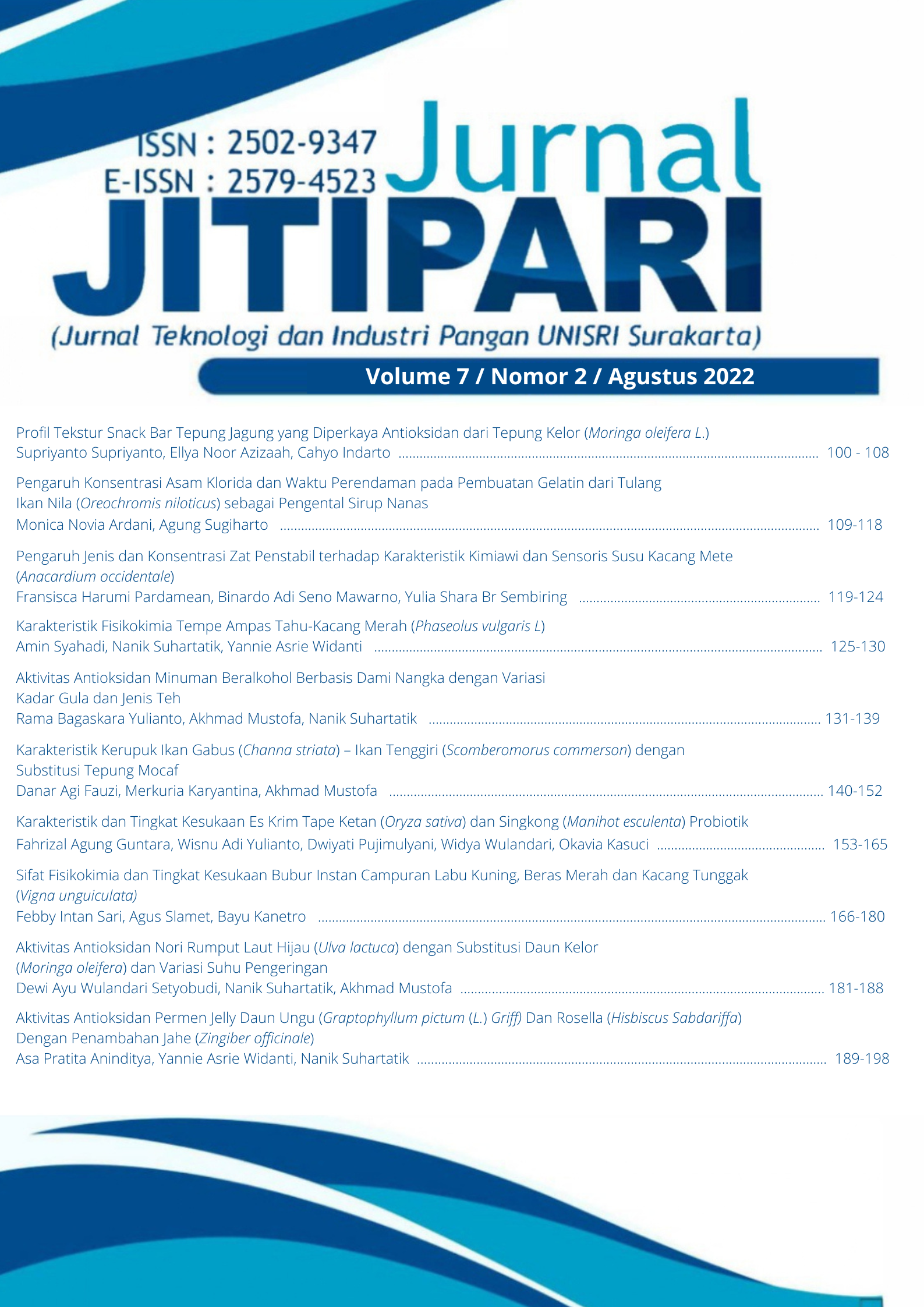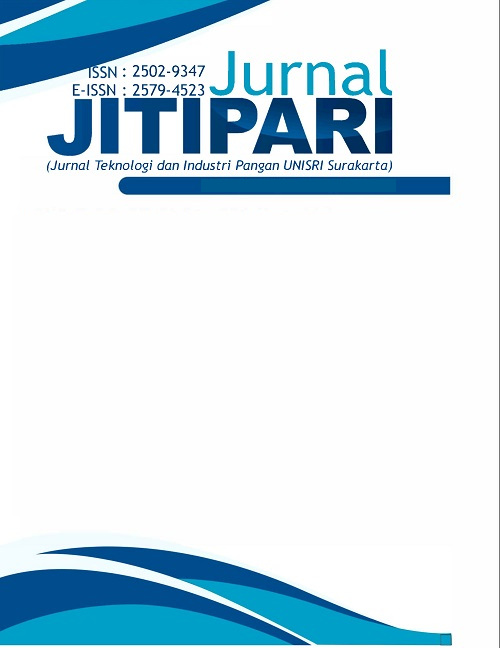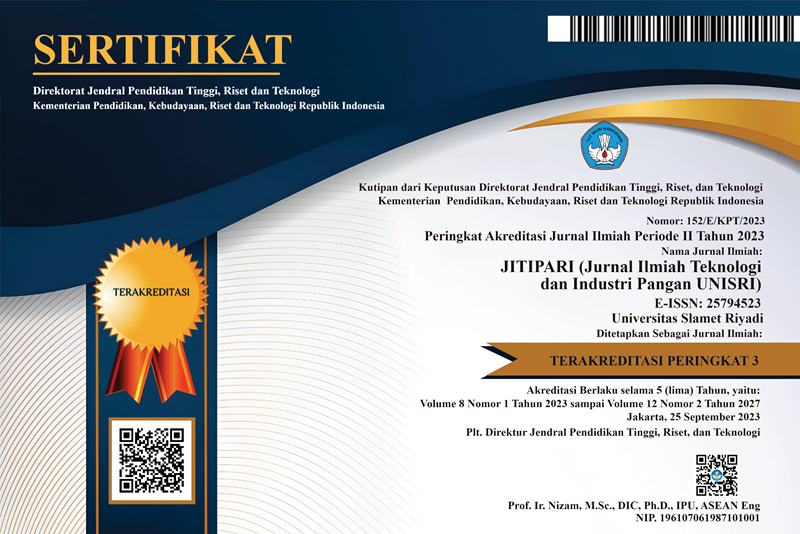Karakteristik dan Tingkat Kesukaan Es Krim Tape Ketan (Oryza sativa) dan Singkong (Manihot esculenta) Probiotik
DOI:
https://doi.org/10.33061/jitipari.v7i2.7686Abstract
Tape is a traditional fermented food whose benefits can be increased by adding probiotic cells such as Saccharomyces boulardii and Lactobacillus plantarum Dad-13. Tape tends to be easily damaged, so to maintain the viability of probiotics and as a food diversification, tape can be substituted for ice cream dough. The purpose of this research was to determine the effect of substitution and the proportion of substitution of glutinous rice and cassava tape in the manufacture of ice cream on the characteristics and preference level of probiotic ice cream. This research method was carried out using a completely randomized design with a factorial pattern with two factors, the first factor was the type of tape, and the second factor was the proportion of substitution. The type of tape used are white cassava tape, yellow cassava tape, white glutinous rice tape, and black glutinous rice tape with substitution proportions of 0%, 10%, 20%, 30%, and 40%. Analysis of probiotic sticky rice tape and cassava ice cream included water content, total solids, melting time, antioxidant activity, total lactic acid bacteria, total yeast, and preference level. The data obtained will be calculated using the Anova statistikal method. If there is a significant difference between treatments, it is carried out with Duncan's Multiple Range Test significant difference test at a confidence level of α= 5%. The results showed that glutinous rice and cassava tape types and their substitution proportions affected the water content, total solids, melting time, antioxidant activity, total lactic acid bacteria, total yeast, and preference level. Based on the preference level and antioxidant activity, the best ice cream was produced with the substitution of 20% white cassava tape or 20% yellow cassava tape, which had an antioxidant activity of 32.41% and 33.17% RSA and total lactic acid bacteria of 1.79 x 108 and 1.67 x 108 CFU/g, respectively.
Downloads
Published
How to Cite
Issue
Section
License
Copyright (c) 2022 Wisnu Adi Yulianto, Fahrizal Agung Guntara, Dwiyati Pujimulyani, Widya Wulandari, Okavia Kasuci

This work is licensed under a Creative Commons Attribution-NonCommercial 4.0 International License.
Authors who publish this journal agree to the following terms:
- Authors retain copyright and grant the journal right of first publication with the work simultaneously licensed under a Creative Commons Attribution-ShareAlike 4.0 International (CC BY-SA 4.0) that allows others to share the work with an acknowledgement of the work's authorship and initial publication in this journal.
- Authors can separately make additional contractual arrangements for non-exclusive distribution published by the journal (e.g., publish it in a book), with an acknowledgement of its initial publication in this journal.
- Authors are allowed and encouraged to send their work via online (e.g., in the institutional repositories or their website) after published by the journal.










